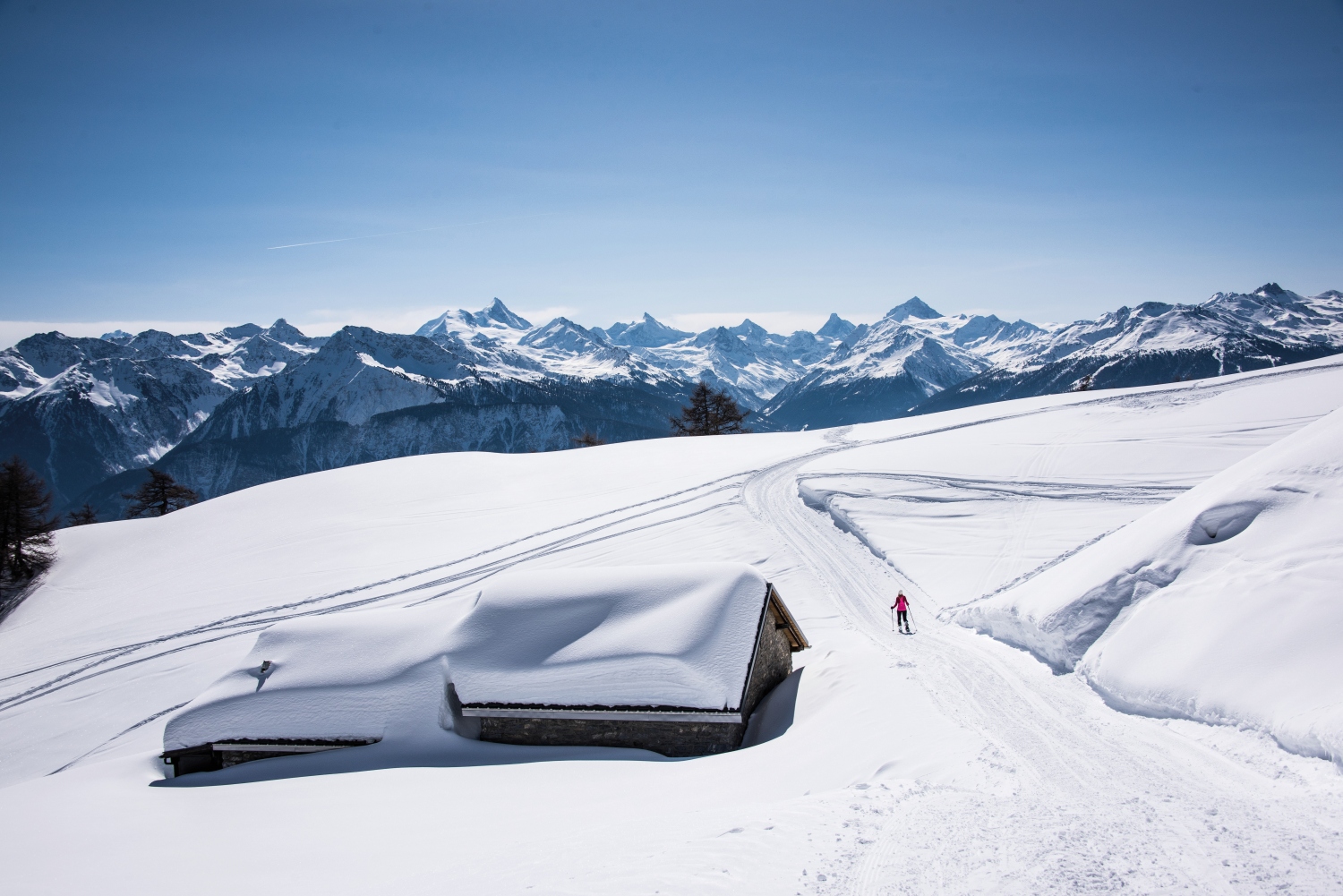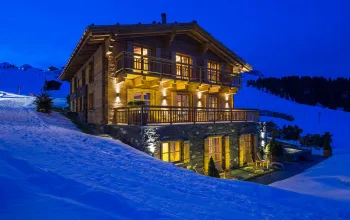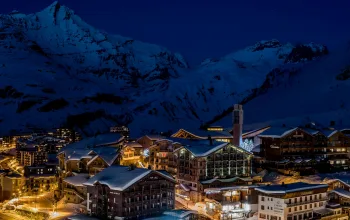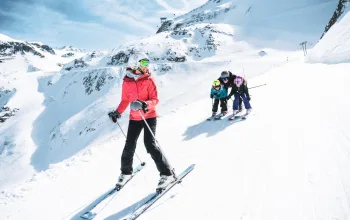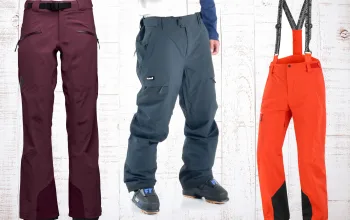Independently researched and written by the Snow Team, sponsored by the experts at Inghams
We love ski holidays in Switzerland. We love the food, the endless slopes, the ridiculously beautiful resorts and the seamless way skiers can glide from its many airports straight to the slopes—in many cases via spectacular mountain railways.
Skiing in Switzerland might be more expensive than visiting French, Austrian or Italian ski resorts, but the country has considerable upsides too. There's its rich winter sports history, the prevalence of 4,000m peaks, meaning lots of options for high altitude, snow sure skiing, and just the fact that everything in Switzerland runs like clockwork. This winter several Swiss ski resorts will host FIS World Cup events (the action kicks off at Zermatt in early November), so there’s never been a better time to head to its powder-blanketed slopes.
So whether you're considering a Swiss ski holiday for the first time or you've been heading to famous Swiss ski resorts such as Zermatt or Verbier for years, we've got the lowdown on the best ski resorts in Switzerland to put at the top of your hit list this winter.
- Aletsch Arena
- Andermatt
- Crans-Montana
- Grimentz
- Grindelwald
- Gstaad
- Laax
- Mürren
- Saas-Fee
- St. Moritz
- Verbier
- Zermatt
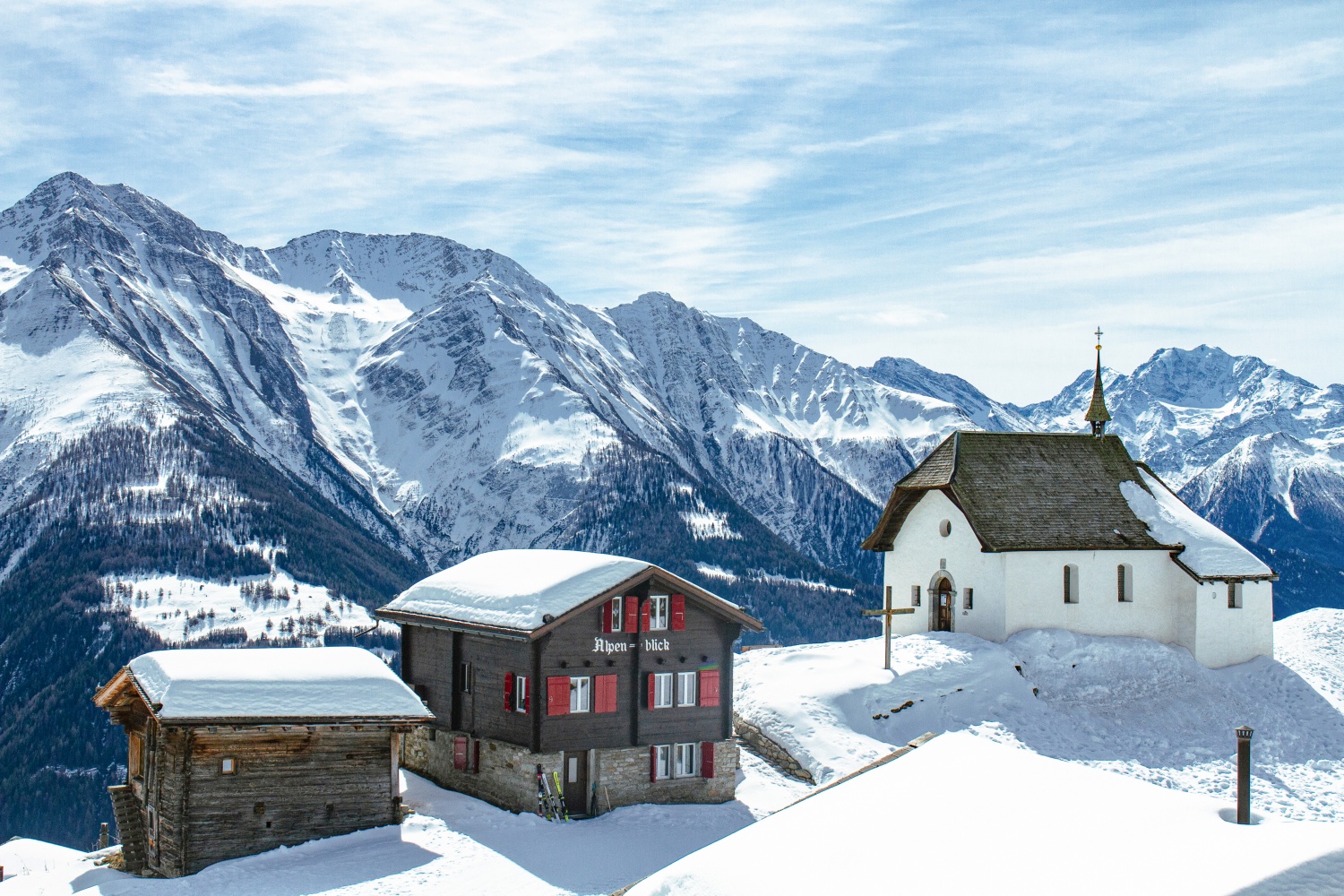
Aletsch Arena has snowy, car-free streets and stunning views. Photo: Tristan Kennedy Aletsch Arena
Entering the Aletsch Arena is like stepping into the future, as imagined by a utopian visionary from the 1950s. You board an enormous cable car, housed in a brutalist concrete structure, above a cavernous carpark. By the time you reach the top, 1,000 vertical metres higher up, you're stepping out into a different world. Roads are replaced by snow-covered pistes, cars have been swapped for snowmobiles, and skiers schuss slowly down the streets, dodging pedestrians as they go.
There are three separate, car-free villages, each with its own cable car down to the valley floor, that make up the Aletsch Arena ski area. Riederalp, Bettmeralp and Fiescher. Each are a mixture of traditional, Swiss chalets and more modern hotels, and all offer arguably the most ski-in, ski-out accommodation you'll find anywhere on the planet.
The pistes which connect the villages tend to be wide, motorway style blues and reds, making this a perfect place for intermediates and families. Gradients aren't too steep as a rule, and the whole resort is south facing, so it gets a lot of sun. This could be a problem later on in the season, but the high altitude (pretty much all of the terrain is above 2,000m) means that these slopes actually hold their snow well. Any patches that don't are covered by a sophisticated artificial snow system.
If the ease of access is one of Aletsch's great selling points, the other is its location. On one side, you have absolutely stunning views out towards the Matterhorn and its surrounding peaks. On the other, you have the majestic Aletsch Glacier, the largest in Europe.
Check out our full resort guide to Aletsch Arena for more info, or read our locals' guide to the best spots to eat, drink and ski.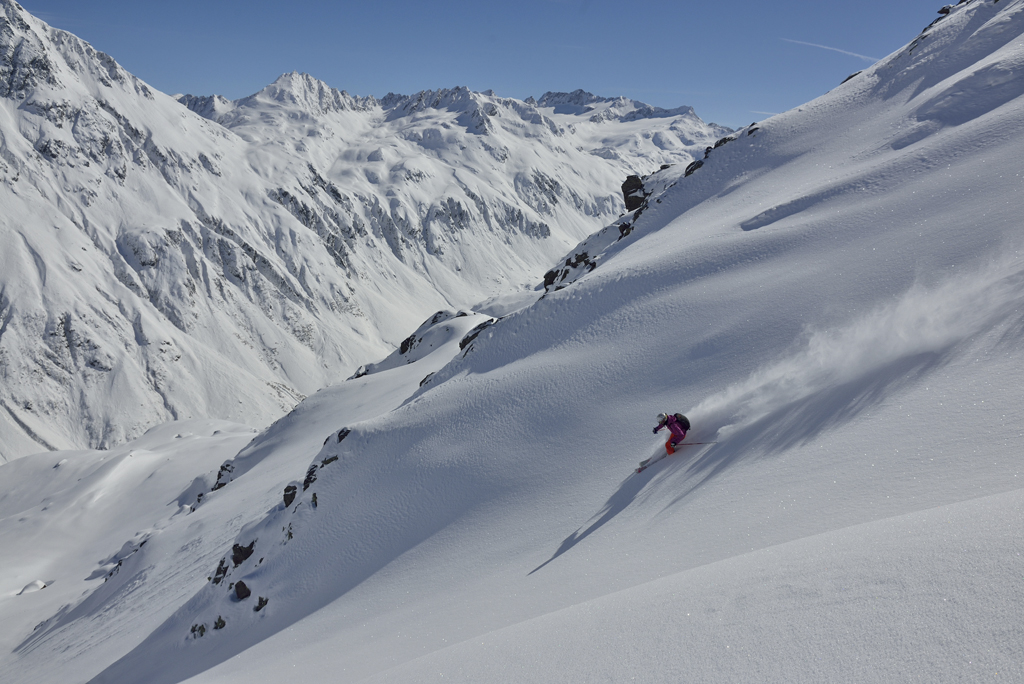
Photo: Peter Lienert_Switzerland Tourism Andermatt
A snow-sure resort just two hours from Zurich, Andermatt is a modern resort which has recently benefited from a £1.4 billion investment, much of which has been spent on slope expansions and improvement. These enhancements don’t just mean it’s easier to get to the nearby beginner-friendly ski resorts of nearby Sedrun and Disentis, but mean there’s more to roam in Andermatt itself, which has 180 kilometres of pistes reaching up to 3,000 metres above sea level.
The ski area is divided into halves: Gemsstock, where the high, north-facing ski runs get some of the best snow cover in the Swiss Alps and are popular with advanced skiers, and Nätschen, which is more suited to learners and has some of the best beginner slopes in Europe.
If you’re planning on spending the majority of your time in Nätschen, consider staying at the five-star Chedi Andermatt. The hotel has nine restaurants and après ski bars, including a brilliant Japanese restaurant, where you can chow down on delicious Asian cuisine while taking in the spectacular views of the surrounding peaks, along with the Oberalp pass and the Ursern Valley.
Read our Andermatt ski resort guide or more details.
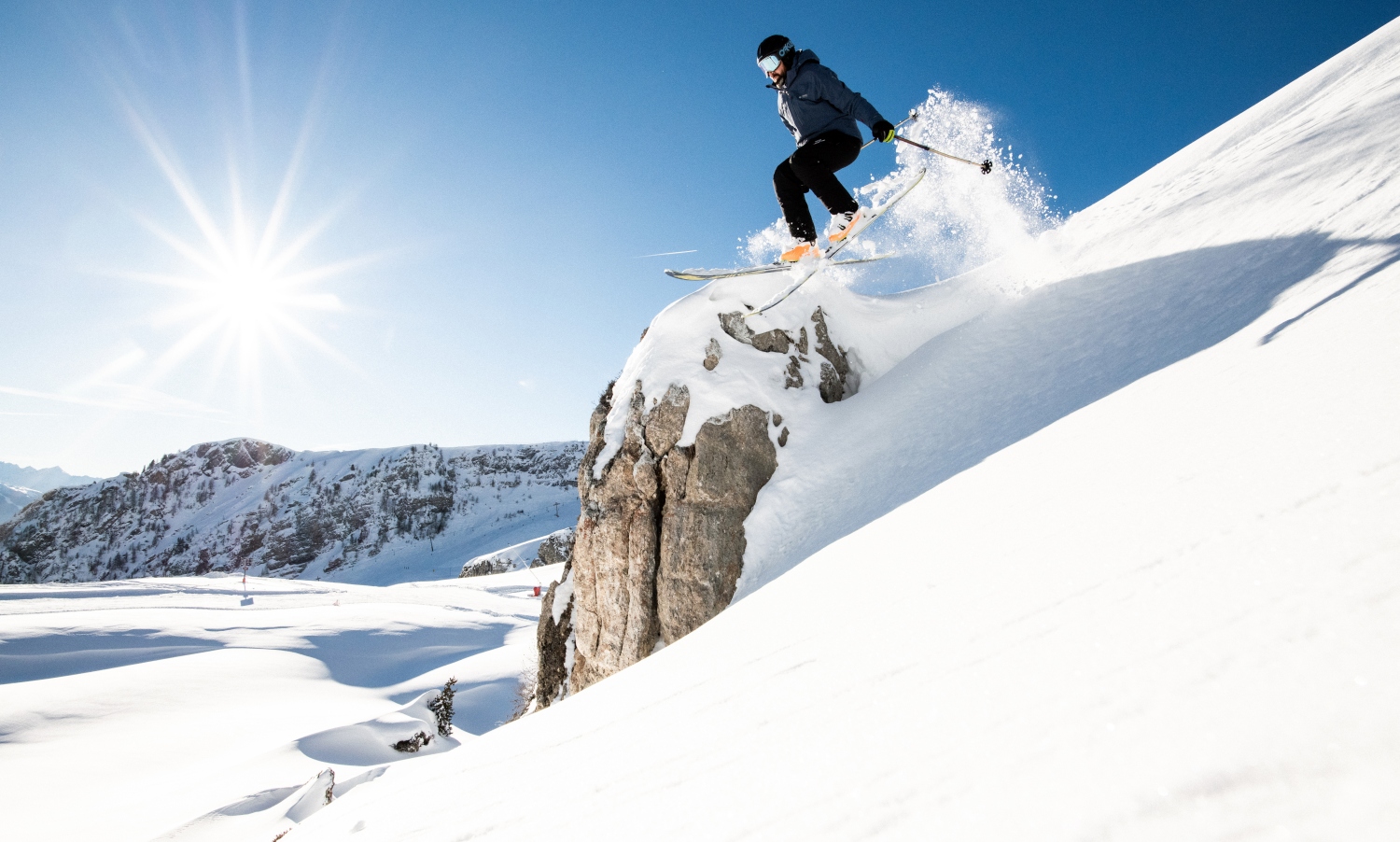
Photo: Photo: PhotoGenic_OlivierMaire Crans-Montana
This French-speaking ski resort has terrain for every type of skier and snowboarder, with 140 kilometre network of ski runs at a height of between 1,500 and 3,000 metres. It’s particularly well suited to intermediate and advanced alpine skiers though—it has an FIS Ski World Cup downhill course and is great for ski touring.
Starting in 2018, the resort rolled out a network of 15 ski trails set aside exclusively for touring, and to access them you’ll simply need a £4 ski touring pass which covers the cost of rescue (should you need it, which you won’t, obviously). One of the resort’s newest additions is the Alaïa Chalet, which opened in 2018. Head to this enormous indoor/outdoor sports complex to sign up for lessons in everything from skateboarding to parkour.
Crans Montana's après ski, accommodation (most of which has between three and five stars) and restaurants (all 90 of them) are incredibly varied – you’ll never go hungry in Crans-Montana, where you’ll find restaurants specialising in Thai, Argentinian and Italian cuisine, and where two restaurants have already bagged Michelin stars.
In 2023, it was announced that the American conglomerate Vail Resorts had bought a controlling stake in Crans Montana. They've promised to invest millions in further upgrades to infrastructure, guest services and food and drink offerings. They also promised not to mess with the atmosphere that made this resort special in the first place. So fingers crossed it will be a win-win.
Give our full Crans-Montana ski resort guide a read more more info.
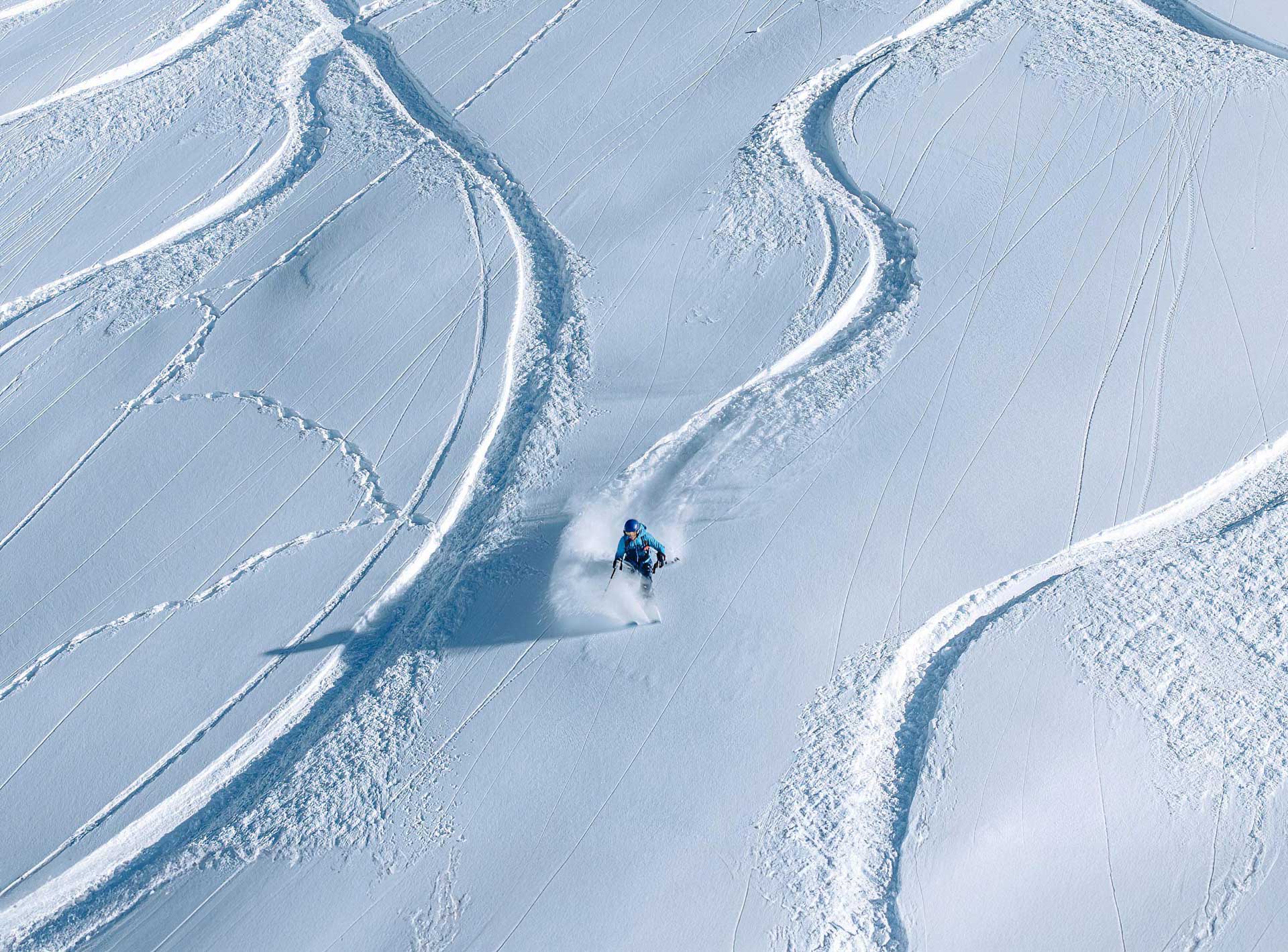
A skier making the most of the powder in Grimentz. Photo: Val d'Annivers Tourist Office Grimentz
Sandwiched between two vastly more famous neighbours (Verbier and the 4 Valleys to the west, and Zermatt to the east) Grimentz flies under the radar in terms of reputation.
This probably suits most of its visitors down to the ground, because Grimentz' clientele tends to fall into two, broad categories: families, who prefer uncrowded slopes for the safety of their kids, and powderhounds, who want as few people as possible to track out the best spots.
The slopes are a nice mix of blues and reds and greens, and much of the ski area is above 2,000m, making it relatively snow sure. With 115km of piste the resort isn’t massive, but there's more than enough to keep intermediates occupied for the week.
For experts, the off-piste skiing here is something else. The mountain's mostly north-facing aspect means the slopes preserve their snow well, and there are multiple long, leg-burning descents to explore. While nothing in Switzerland comes cheap, prices down in the village compare pretty favourably to elsewhere, and the lift pass prices are fairly wallet-friendly by Swiss standards too.
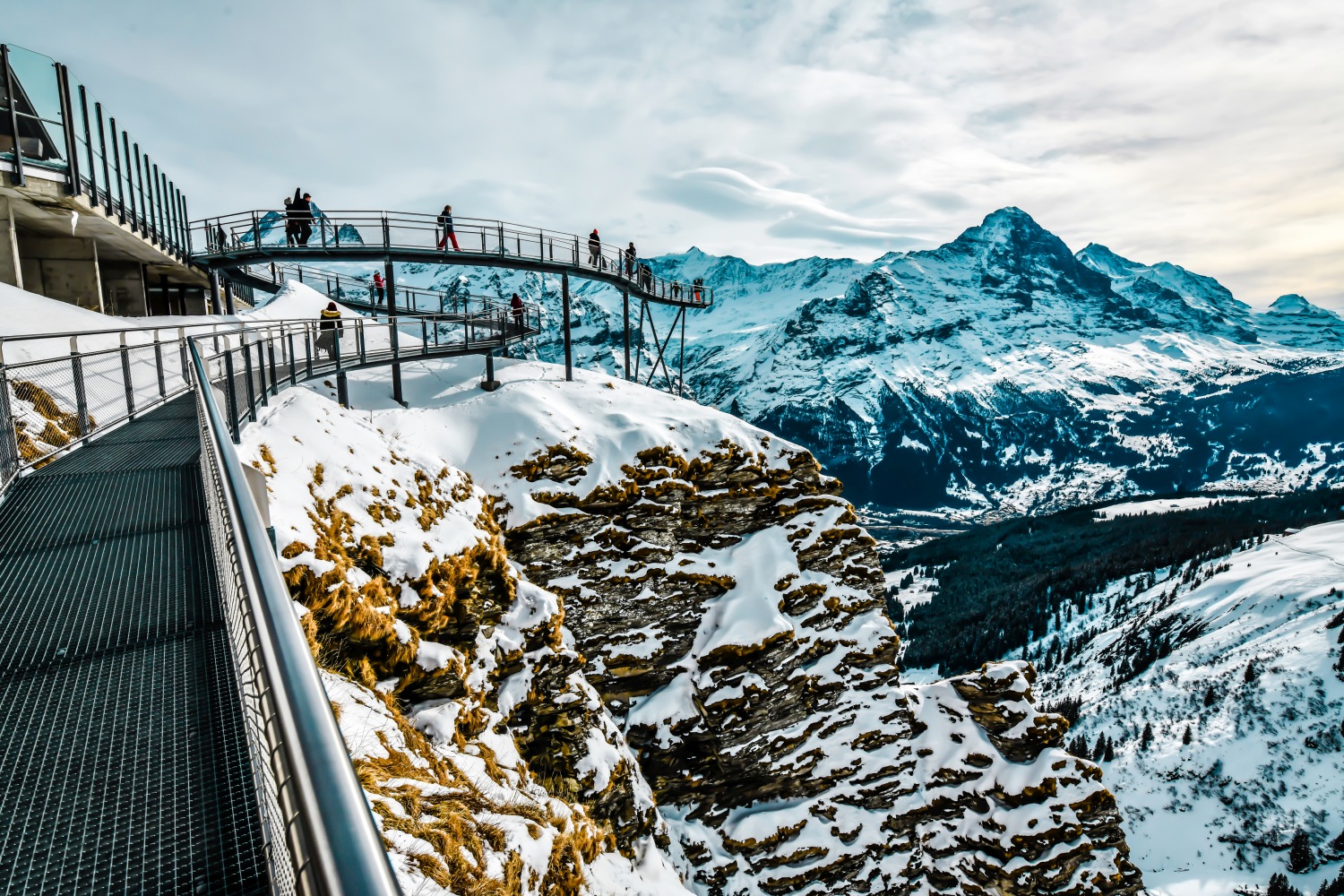
Photo: AleksandarGeorgiev_iStock Grindelwald
This is a resort which has it all: easy access to the enormous Jungfrau region, where the fantastic lift network means you can tackle the FIS-certified Lauberhorn pistes and still make it home in time for tea; a beautiful resort centre filled with some of the region’s quaintest cafés and boutiques, and proximity to Zurich, Geneva and Basel airports.
The area's 160 kilometres of pistes top out at 2,971 metres, and there are 80 kilometres of immaculately groomed winter walking trails, too. The best bit? You'll be able to fly down 60 kilometres of toboggan trails, our favourite of which is the 15-kilometre course (Europe’s longest) which streaks down the side of the Bernese Alps’ Faulhorn mountain.
The Eiger looms somewhat menacingly over this pretty ski resort, but don’t be put off – the terrain is incredibly diverse, although the majority of runs are blue and red. Keep an eye out for chamois dashing between the wildlife reserves (out of bounds to skiers) dotted throughout the ski area. For the best views or surrounding peaks, hop on the Eiger Express, which opened in late 2020. The 26-seat gondola will whisk you from Grindelwald to the Eiger Glacier station in just 15 minutes (previously this journey took 47 minutes).
Take a look at our Grindelwald ski resort guide for more info.
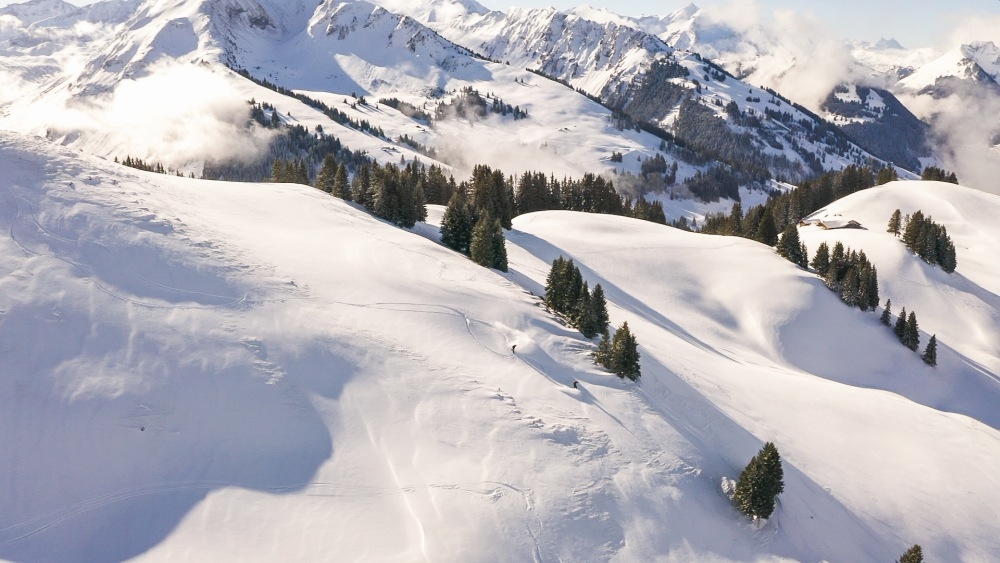
Photo: Daniel Wildey Gstaad
If you need additional reasons to head to this resort for your next ski holiday, look no further than the palatial Gstaad Palace, with its famous spa (named the world’s best hotel spa at the World Spa Awards 2020) and five restaurants. For the ultimate indulgence, book the Champagne & truffle fondue, served in the hotel’s underground La Fromagerie.
Comprising a cluster of villages (many of which date back to the 1500s) between 1,000 and 1,400 metres above sea level, Gstaad is a brilliant resort for skiers who are either just starting out or keen to improve - 80 per cent of the slopes are suitable for either beginners or intermediates. Although advanced skiers aren’t quite as well catered for, there’s still a decent number of seriously steep runs, including the Tiger Run, which has an average gradient of 45 degrees.
It’s one of the best resorts for cross country skiing in Europe – Gstaad has the country’s first permanent cross country skiing trail, which is part of a network of 180 kilometres of trails covering six areas. Don’t forget to take a ride on a mountain railway, either – the wider Bernese Oberland area has 41 of them, and in Gstaad, they provide easy access to the resort’s six toboggan runs.
Make sure you check out the new Eggli gondola, too. This is one of Switzerland's most modern lifts - a 10-person Porsche-designed ski lift, which opened in December 2019 and speeds skiers to the top of Mount Eggli in record time.
Our full Gstaad ski resort guide has more details on this great resort.
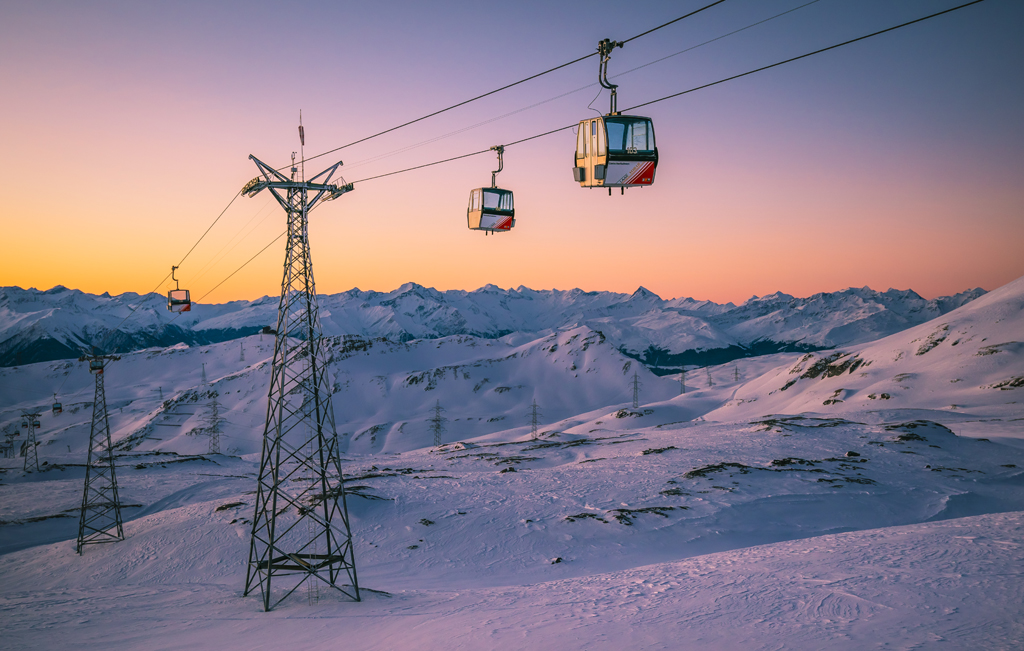
Photo: Philipp Ruggli_Switzerland Tourism Laax
Framed by spectacular mountains and home to four snow parks, 28 ski lifts and 224 kilometres of ski slopes (70 per cent of which are wedged between a sky-scraping 2,000 and 3,000 metres above sea level), Laax is a Swiss ski resort par excellence, which has endless appeal for all levels of skier. It's also one of the cleanest ski resorts in the world in terms of carbon emissions—all its lifts and snowmaking equipment are powered by renewable energy sources, and it has ambitious plans to become a zero carbon operation (not just carbon neutral, but actual zero emissions) by 2030.
Everything is supercharged here, whether it’s the night skiing, the highlight of which is the six-kilometre slope which stretches from Curnius to Laax Murschetg, or the food scene, which includes not only 30 restaurants (including some of the best mountain restaurants you'll find in Swiss resorts) but dedicated culinary trails.
Everything about Laax – both on the slopes and off – is top notch, largely because the resort regularly hosts some of the world’s biggest ski and snowboard competitions and its slopes attract some of the world’s most famous skiers and snowboarders (its Freestyle Academy is Switzerland's only Olympic freestyle training base).
We’re also huge fans of the resort’s dedicated app (Inside Laax), which does a great job of taking the hassle out of ski holidays. Download it and you can research the apres ski, use the map to navigate the various ski areas, request the Laax shuttle, check out which lifts are open and monitor your kids’ progress at ski school.
Check out our full Laax ski resort guide for all the details.
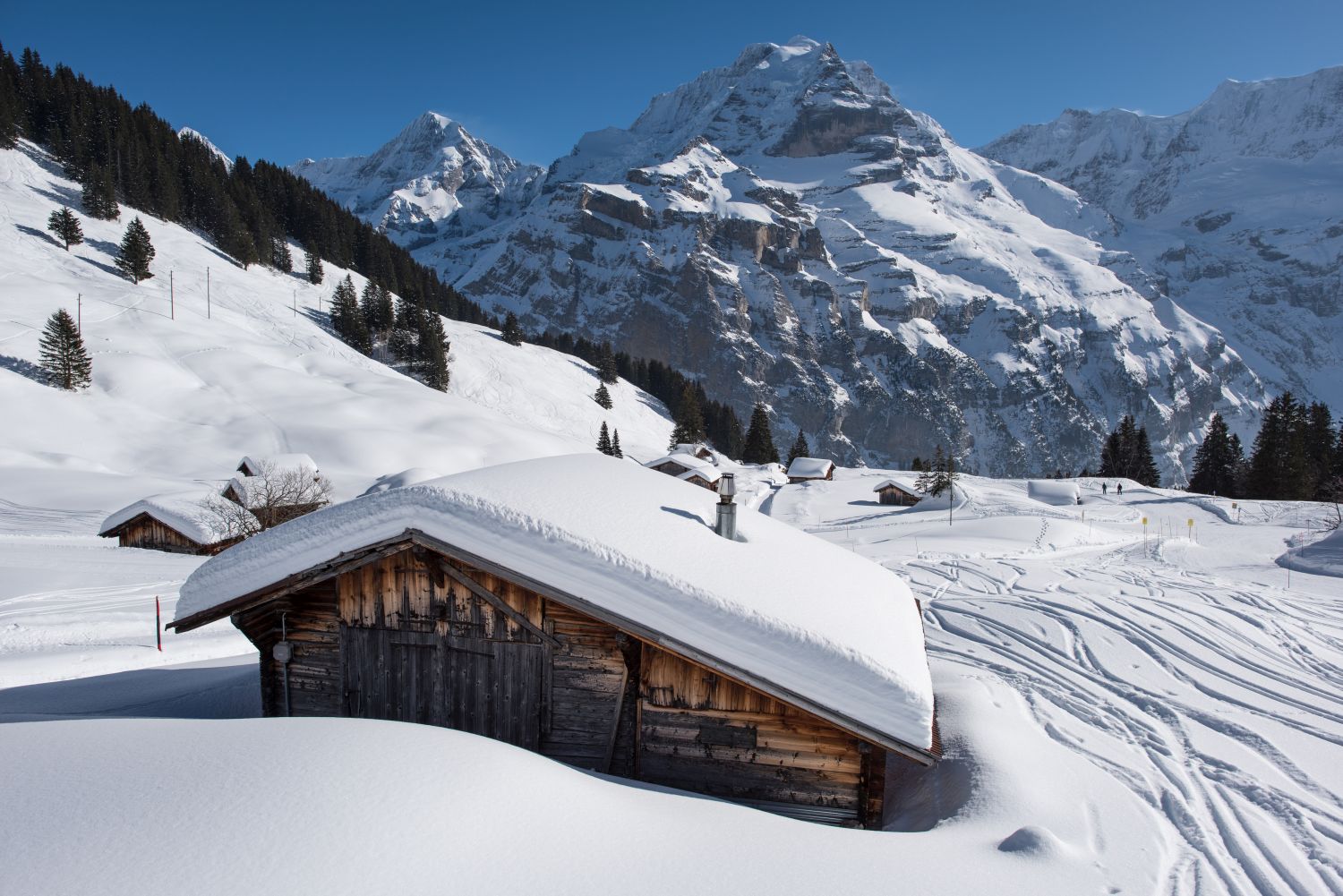
Photo: iStock_ipsimus Mürren
A small resort, with an illustrious history, Mürren has attracted a growing number of visitors in recent years. It sits at the foot of the Schilthorn, a mountain made famous by James Bond in On Her Majesty's Secret Service. Head here to explore 53km of pistes and a surprisingly large network of winter walking trails and cross country trails.
It’s a brilliant destination if you’re craving some peace and quiet – it’s a car-free resort, and the views of the Eiger, Mönch and Breithorn are breathtaking. The town itself is small and quaint, and has a rich history - this is where Sir Arnold Lunn launched the world’s first package ski holiday back in 1922.
As one of the highest resorts in the Jungfau region, it’s also one of Switzerland’s most snow-sure – you’re unlikely to find any shortage of the white stuff between December and March, and it’s a brilliant spot for spring skiing. It doesn’t have the largest ski area but the ease with which it can be combined with nearby Wengen and Grindelwald more than makes up for this, and there are still plenty of thrills to be had here. Our recommendation? Run No. 9 (otherwise known as Direttissima) which streaks down the side of the Schilthorn. But hold on tight – this slope’s average incline is 88 per cent.
Read our full guide to Mürren ski resort for more info.
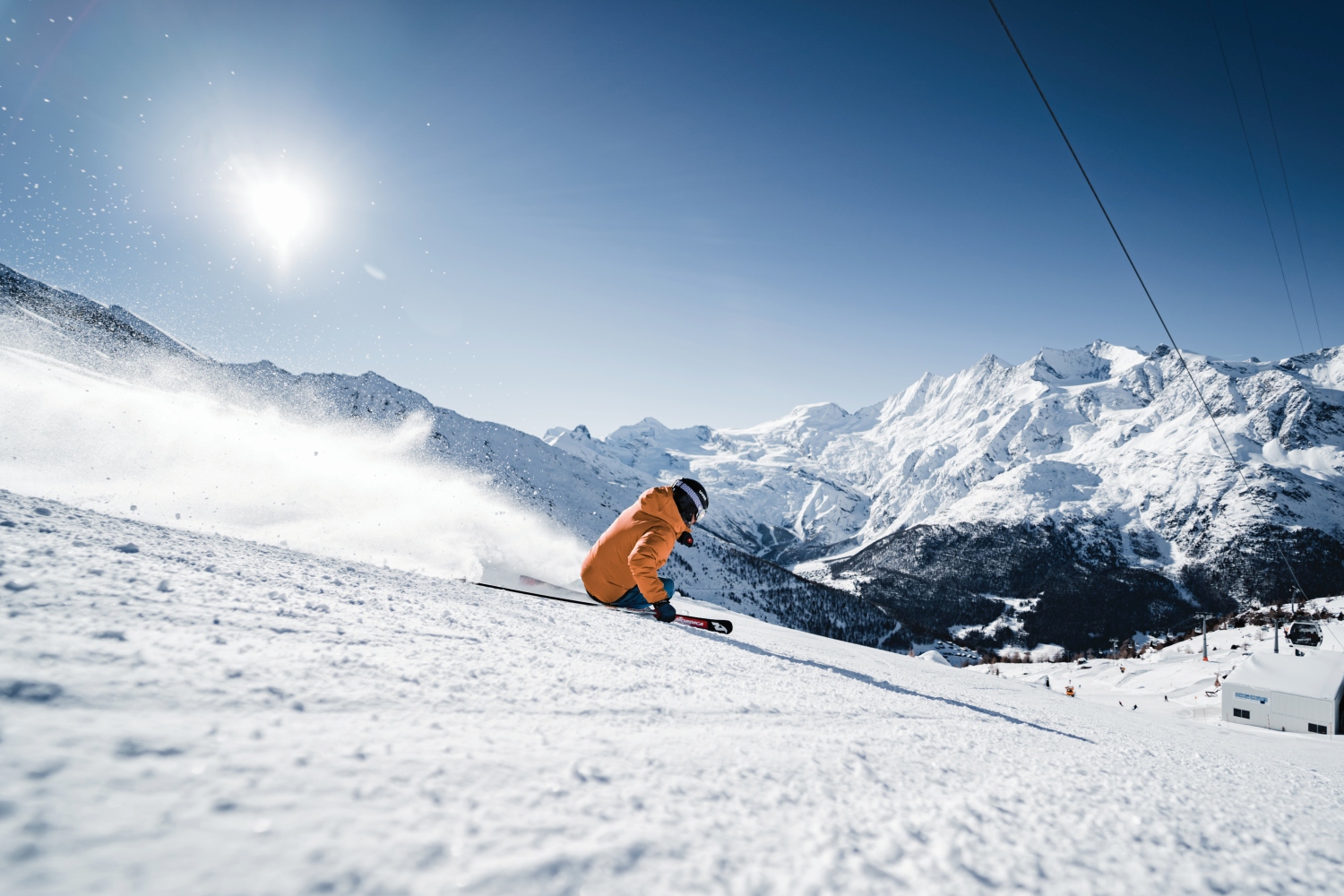
Photo: Saastal Tourismus_AG Amarcster Saas-Fee
Dubbed "the pearl of the Alps" Saas-Fee is a ski resort which combines serious, high alpine terrain with a family-friendly village, making it one of the best Swiss ski resorts not just in the Valais, but in any of the country's 26 cantons. Surrounded by no fewer than 13 4,000m peaks, the village was one of the first in the Alps to go car-free, and takes its commitment to sustainability very seriously. In fact, it's one of the most eco-friendly ski resorts in Europe.
This response to the climate crisis is perhaps not surprising, given Saas-Fee's terrain. The ski area is split between three main zones—Saas-Fee, Saas-Grund and Saas-Almagell—two of which boast high slopes scattered with spectacular seracs and crevasses, where the ravages of global heating are all-too visible.
On the plus side, the altitude (lifts top out at 3,500m in Saas Fee and 3,200m in Saas-Grund) mean that the ski area is the very definition of snow sure in winter, and you can ski here all year round. The halfpipe is famously one of the few which can stay open during the northern hemisphere summer, making Saas-Fee one of the top ski resorts in the world for pro spotting. In winter, the sheer amount of off piste terrain on offer is impressive, offering plenty for backcountry enthusiasts to get stuck into.
While it's not the most easily accessible, with no direct train line from any of the major air transport hubs in Switzerland, the car free village is well worth the extra time it takes to get there. Traditional wooden chalets abound, while a multitude of après ski and dining options means you'll never get bored—as long as your wallet can take the hit.
Check out our full Saas-Fee resort guide for all the details.
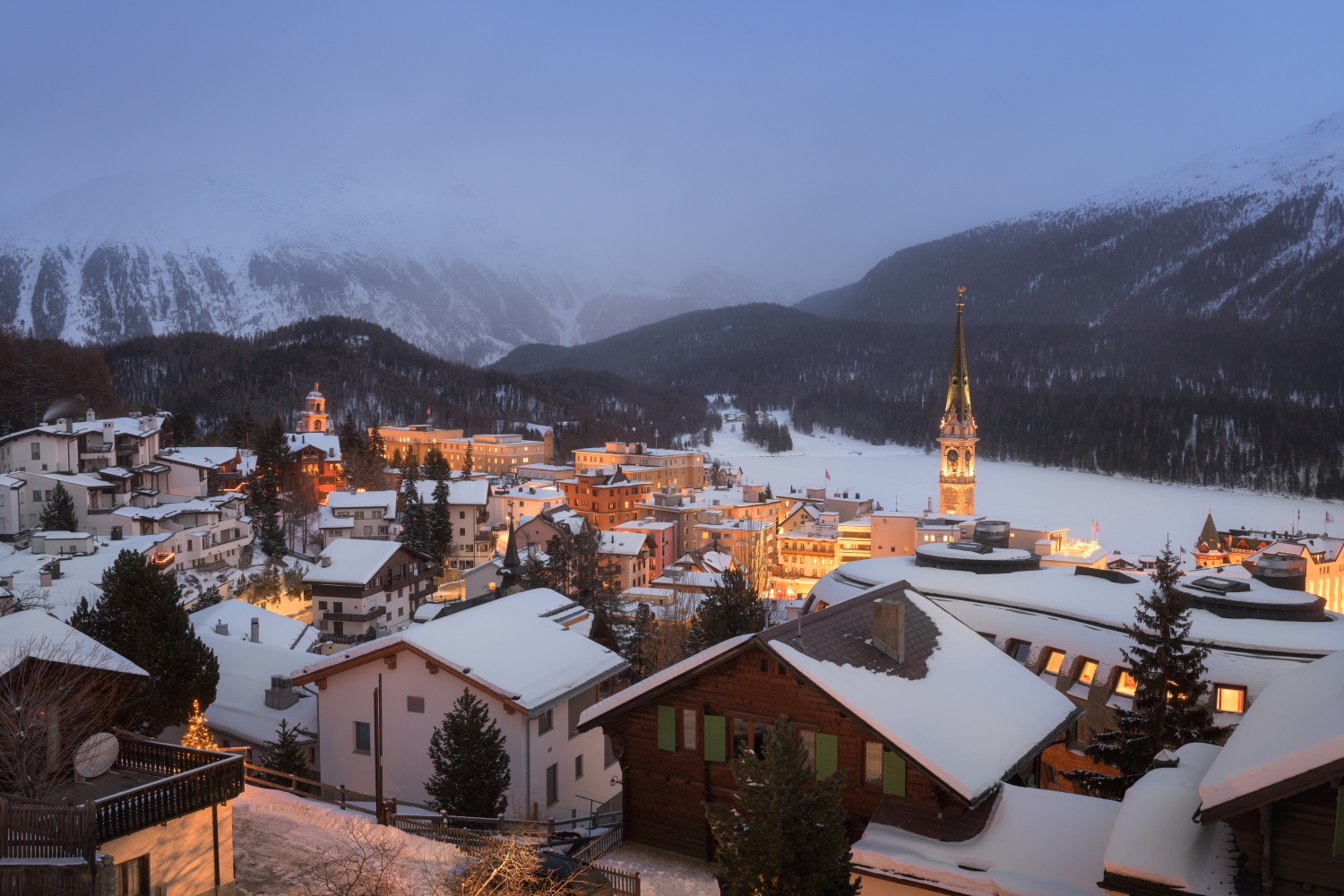
Photo: iStock_Andrey Omelyanchuk St. Moritz
Winter sports destinations don't come more storied than St. Moritz. Arguably Switzerland's first ski resort, it played an important role in the development of winter tourism as a whole. In 1864, local hotelier Caspar Badrutt made a wager with four of his summer guests, betting that if they returned in winter, they'd find the village equally agreeable. If they didn't, he said he'd pay for their return journey back to the UK.
Of course, they were charmed, and their 'discovery' sparked demand for a new kind of active winter holiday among the British upper classes, with outdoor pursuits like ice skating, and bobsledding (invented here in 1890) fast becoming popular. Ski lifts were installed soon after the invention of alpine skiing in the 1920s, and in 1928, the resort hosted the second ever Winter Olympics.
Today, St. Moritz boasts an extensive lift system, crowned by a top cable car that takes you up to 3,057m above sea level, just below the summit of Piz Nair. The skiing alone would be enough to make this one of the best ski resorts in Switzerland, with the large ski area offering varied terrain including plenty to keep off piste skiers engaged. But the thing that really sets St. Moritz apart is the off-hill activities—from the annual ice polo tournament, to the skating on the frozen lake (which is kept in better condition than many indoor ice skating rinks), to the chance to try your hand at bob sledding, watch the daredevils throwing themselves down the infamous Cresta Run (think skeleton bob, but with more crashes), or try out the network of cross country ski trails.
Badrutt's hotel is still open too, and is well worth a visit—although unless you're feeling flush, we'd recommend just popping in for high tea. Otherwise the rooms start from over 1,200 Swiss Francs (£1,000) per night.
Our full St. Moritz ski resort review has more details.
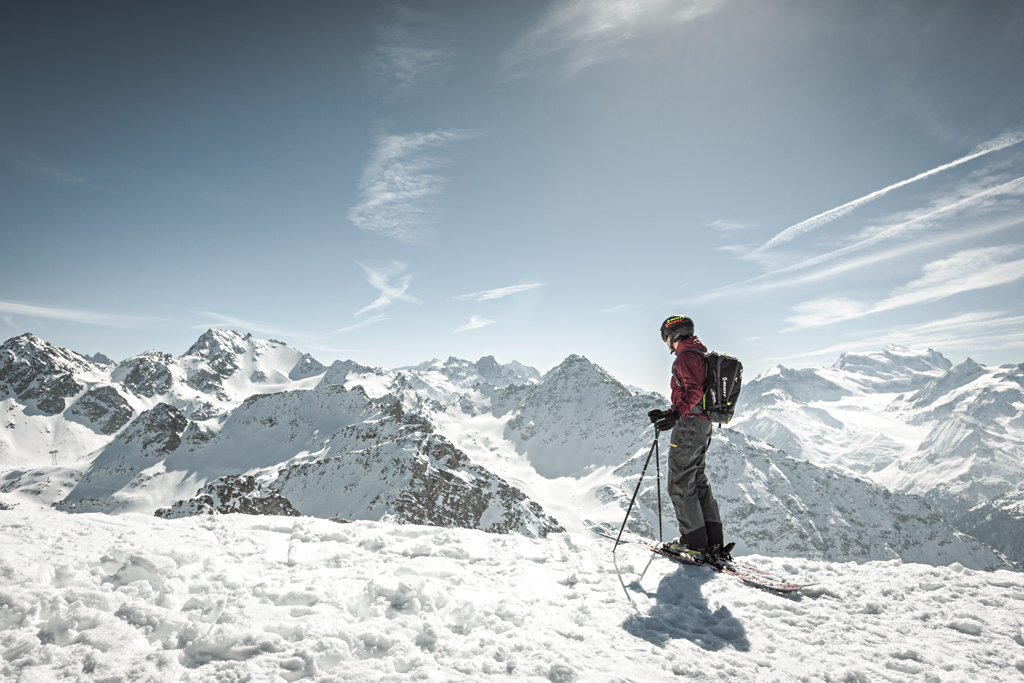
Photo: Pascal Gertschen_Switzerland Tourmism Verbier
Historically seen as a playground for the rich and famous (and let’s face it, there’s still a certain amount of truth in this, proof of which is the fact the resort named a ski lift named after regular visitor James Blunt), Verbier is a popular ski holiday destination which has always attracted skiers of all skill levels, who can explore the enormous 4 Valleys ski area while also enjoying easy lift access to other ski resorts such as Thyon, Nendaz, La Tzoumaz and Veysonnaz.
The majority of Verbier’s runs are blue and red, with just a handful black runs (including the famous, mogul-dotted Mont Fort slope for those keen to put their skis to the ultimate test). It's also one of the most modern Swiss ski resorts, and has hosted some of the world's most important skiing and snowboarding competitions, including the finale of the Freeride World Tour every year.
Non skiers are especially well catered for, because the range of activities available away from the slopes is staggering – skydiving, ice climbing, paragliding, horse riding and dog sledding are all on offer here. Despite its pricey reputation, the huge range of accommodation means finding a bed doesn’t mean breaking the bank. Luxury crash pads include the five-star La Cordée des Alpes (a member of the Small Luxury Hotels of the World group) and the ridiculously swanky Chalet Truffe Blanche, where amenities include a cocktail bar, library, cinema room, private nightclub and swimming pool.
However, there are plenty of options for travellers on a budget, too. We recommend the MAP Verbier-Village hostel for larger groups, while couples should consider one of the resort’s bed-and-breakfasts (Les Sapins Bleus, where there’s a focus on local produce, is one of our favourites).
Read our full Verbier ski resort guide for everything else you need to know.
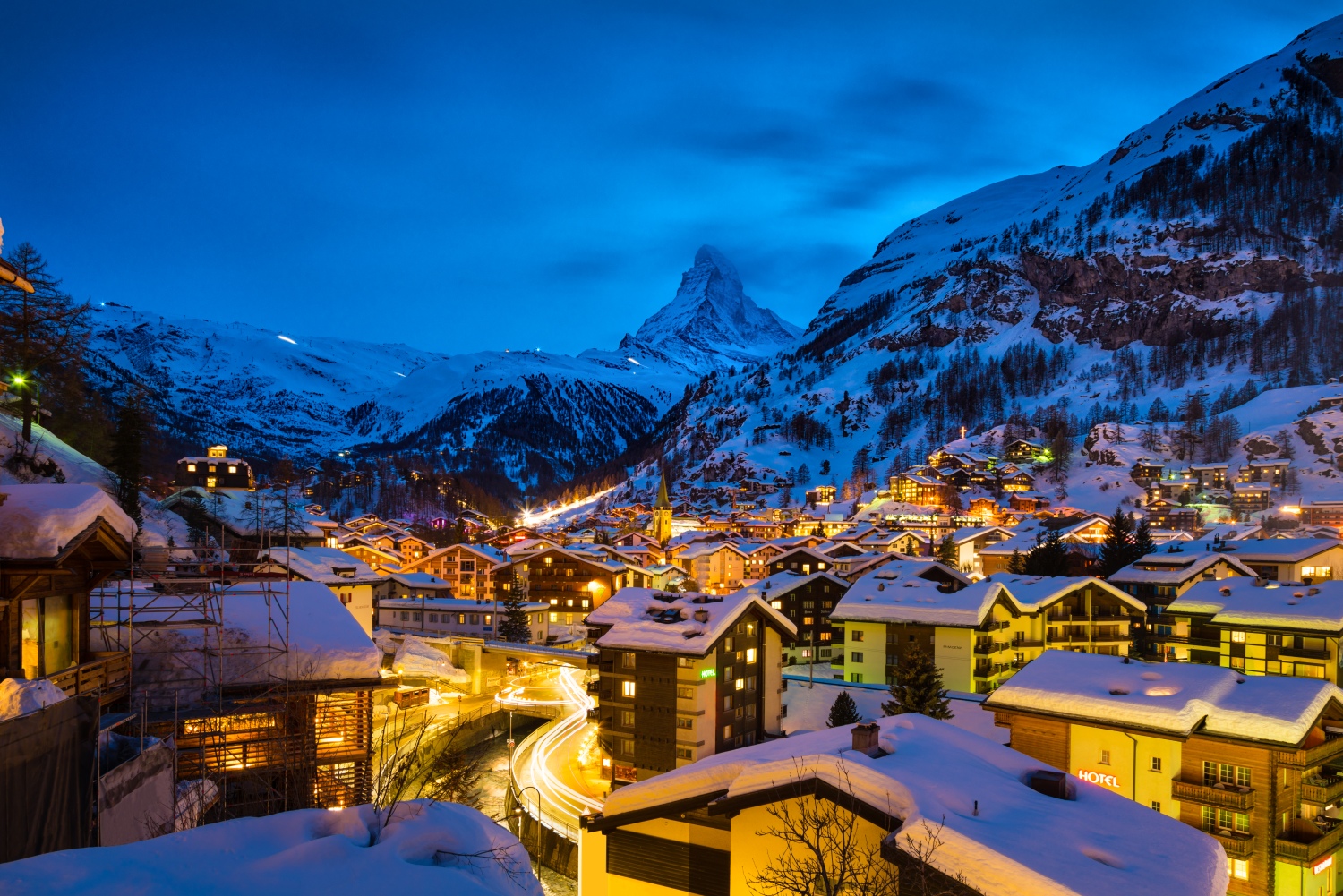
Photo: MatjazBoncina_iStock Zermatt
Another ski resort in a spectacular setting (in this case, thanks to the looming backdrop of the Matterhorn), Zermatt, in the heart of the Valais region, is a high-altitude playground with a world class reputation. While the resort has long been linked to Cervinia by the slopes, this year marks the opening of the new Matterhorn Alpine Crossing lift—a cable car which will whisk you across the glacier more speedily, making travel between the two a doddle.
The combined Zermatt-Cervinia ski area boasts an incredible 360 kilometres of pistes, most of which are blue and red, making it a great place for intermediate skiers.
Zermatt's après ski is incredibly diverse – visit in winter and you’ll find everything from slope-side champagne bars such as the Champagner Bar Teehäuschen Flora to cosy retreats like the Papperla Pub, where you can wash down pizza-like Flammküchen with local Swiss beers. The range of accommodation is equally varied.
Zermatt has plenty of catered chalets and self-catering apartments perfect for those on family ski holidays, and the resort has one of the most diverse selections of hotels in the Swiss Alps, with everything from boutique hotels such as the Hotel Walliserhof to the five-star Mont Cervin Palace. Regarded by many as not just the best hotel in Zermatt but the Swiss Alps, it's got three restaurants and an enormous spa.
Take a look at our Zermatt ski resort guide for more details.



